Environmental News and Events for Chemung, Genesee, Livingston, Monroe, Ontario, Orleans, Schuyler, Seneca, Steuben, Wayne and Yates counties (Region 8)
The New York State Department of Environmental Conservation sent this bulletin on 05/22/2023 11:52 AM EDT |
| DEC Delivers - Information to keep you connected and informed from the NYS Department of Environmental Conservation |
| View in browser |
Environmental News and Events for Chemung, Genesee, Livingston, Monroe, Ontario, Orleans, Schuyler, Seneca, Steuben, Wayne and Yates counties (Region 8) |
In this issue:
Get Outdoors and Get Together Day
Each location will have its own array of special activities. Visit DEC's website for all event details, including schedules and any registration requirements. Volunteer Opportunity for Finger Lakes Anglers
Ethan Haley and Dominic Bianchi with their catch of the day. Fish were caught at the same time on Conesus Lake. A quick photo was taken, and the fish were released. These smallmouths were pre-spawn just cruising the shallows during the rapidly warming waters. Are you interested in the management and quality of New York’s unmatched Finger Lakes fisheries? Consider helping DEC evaluate fisheries management actions on the Finger Lakes and their tributaries by joining our Volunteer Angler Diary Cooperator Program. You can help DEC continue to provide anglers like yourself with some of the best quality fishing around! Through the Angler Diary Cooperator Program, volunteer anglers keep a diary in which they record information about their fishing trips throughout the year, including lakes fished, number of anglers participating, species targeted, hours fished, length and number of species caught, fin clips (if present), and whether fish were kept or released. DEC analyzes information from all volunteers and a summary of results is sent to each cooperator along with their original diary. This angler-collected data is vital to DEC’s management of the Finger Lakes fisheries. View the 2022 diary summary reports on DEC’s website. New volunteer cooperators are always welcome and encouraged! Anglers fishing Canadice, Canandaigua, Hemlock, Keuka, Seneca, Conesus, or Honeoye Lake, contact Region 8 Fisheries at fwfish8@dec.ny.gov or 585-226-5343 to become a cooperator. Anglers fishing Cayuga, Owasco, Skaneateles, or Otisco Lake should contact Region 7 Fisheries at fwfish7@dec.ny.gov or 607-753-3095, ext. 213. Public Meetings About Lake OntarioMeetings Scheduled for June 6 in Rochester, June 21 in Mexico DEC Bureau of Fisheries Chief, Lake Ontario Unit Leader, and respective regional fisheries managers will be on-hand at two upcoming public meetings hosted by DEC partners in Rochester and Mexico. DEC experts will talk about the current state of Lake Ontario sport fisheries and take questions on a wide array of management actions and research taking place on the lake and tributaries. At the meetings, interested anglers will have the opportunity to speak directly with staff after a brief presentation. The Lake Ontario Charter Boat Association is hosting the first public meeting in DEC's Region 8. What: Lake Ontario Sport Fishery Public Meeting When: June 6, beginning at 7 p.m. Where: Irondequoit Fish and Game Club, 658 Bay Front S. Rochester, NY 14609 For more information contact Chris Legard, Lake Ontario Unit Leader, at 315-654-2147 or email: chris.legard@dec.ny.gov Lake Ontario anglers, and all fishing enthusiasts are encouraged to check out DEC's 'Tackle Box' feature in the HuntFishNY App, which provides anglers one-stop shopping for waterbody-specific information on fishing regulations, stocking, and fishing/boating access sites. Spring into Nature: Region 8 Outreach
Region 8 Division of Fish and Wildlife staff recently tabled an event at the Iroquois National Wildlife Refuge Spring into Nature annual event.
Forest Rangers in ReviewForest Rangers Miller and Lieutenant Wickens participated in the DEC’s own “Bring Your Kid to Work” event hosted at the Avon Office in Region 8. Forest Rangers, along with other program staff, conducted demonstrations, Q&As, and educational stations for the children of DEC personnel to enjoy. There was a K-9 demonstration, tree planting, two-way radio communications, and much more! The event allowed for children to be exposed to numerous environmental careers and it helped all DEC personnel gain an understanding about the work of other programs.
Town of Livonia
Town of Gates
Town of Groveland
Town of Prattsburgh
City of Geneva
For more Forest Rangers in Review and Environmental Conservation Officers on Patrol Stories, please visit the press release page on DEC's website. Arbor Day at the Avon OfficeRegion 8 recognized Arbor Day with a tree planting at the Avon office. Kids who were there for “take your child to work day” also had an opportunity to participate.
Living with Black Bears
Dozens of people turned out to hear a presentation at the Big Flats Community Center on how to avoid conflicts with Black Bears. DEC Wildlife Biologists were on hand to educate people on “living with black bears” and offer proven ways to remove attractants to bears from their properties.
If You Care, Leave It There
During spring months, animal sightings and encounters are common. Young wildlife quickly venture into the world on wobbly legs or are unable to fly on their own. While most young wildlife learn survival skills from one or both parents, some receive little or no care. Often, wild animals stay away from their young, especially when people or pets are present. For these young animals, the perils of survival are a natural part of life in the wild. Unfortunately, well-intentioned individuals may attempt to care for young wild animals they believe to be abandoned or in need of assistance. These human interactions typically do more harm than good. Appreciate wildlife from a safe distance and resist the urge to touch or pick them up If they appear to be sick or behaving abnormally, contact your DEC regional wildlife office If they are obviously injured or orphaned, call a wildlife rehabilitator Keep pets indoors when young animals are present For more information and answers to frequently asked questions about young wildlife, visit DEC's website. 'Clean. Drain. Dry.' Your Watercraft to Protect Waters from Aquatic Invasive SpeciesDEC reminded boaters to clean, drain, and dry their boats and trailers and disinfect their fishing gear before recreating in New York's waters to prevent the spread of harmful aquatic invasive species (AIS). Watercraft inspection stewards (boat stewards) are deploying across the state to educate and assist the public in cleaning equipment this season to prevent the introduction and spread of non-native plants and animals in New York waterbodies. Last year, DEC's boat stewards inspected more than 220,000 boats and intercepted more than 8,000 AIS, including hydrilla, which led to the discovery of a new infestation in the Niagara River. Efforts are currently underway to control the invasive plant and prevent it from negatively impacting the native ecosystem, as well as water recreation. DEC is collaborating with local stakeholders and Federal partners to keep the infestation contained and prevent further spread. All water recreationists should follow these steps to make sure their equipment isn't harboring AIS:
All New York residents and visitors have a role to play in protecting state waters from invasive species. Visit DEC's website for more tips on how to clean, drain, and dry watercraft, fishing gear, and other equipment and for more information about New York's Watercraft Inspection Steward Program. Take an In-Person DEC Course
NEW – Next Step Courses
Happy National Wetlands Month!The Environmental Protection Agency declared May as National Wetlands Month in 1991 to raise awareness of the ecological, social, and economic importance of wetlands across the nation. Almost one-third of our country’s endangered species live in wetlands. Spring Peeper – X Marks the Spot But why do peepers peep? Each male is calling for females and defending its tiny territory. The familiar single but repeated peep is his announcement to the females. If a male territory is invaded by a rival male, he will make a short trilling aggressive call. To make their calls, peepers close their nostrils and mouths and squeeze their lungs, which causes the vocal sac (pictured) in the throat to inflate like a balloon. The peeping sound happens as air leaves the lungs, passes over the vocal cords, and into the vocal sac. Peepers can survive being frozen! As temperatures dip below 32 degrees, these frogs start producing their own “antifreeze” to help preserve the most essential organs. Up to 70% of the frog’s body can freeze and the heart stops pumping. Scientists still aren’t sure how frozen frogs can wake up again. Photo of spring peeper by John Lehmann. Lights Out for Bird Migration Season
Looking for an easy way to take care of your bird friends this migration season? Did you know each year during spring migration many birds that are navigating the night sky become disoriented from artificial building lighting? Not only does city lighting deter the navigational abilities of migrating birds, it also leads to an increase in fatal building collisions, killing an estimated 1 billion birds annually. Play a part in helping birds survive and thrive this season by:
New York State is also committed to helping a variety of bird species during the busy migration season to reduce bird collisions. To do our part, state-owned and operated buildings will participate in the Lights Out Initiative and turn off all non-essential lighting from 11:00 p.m. to dawn during peak bird migrations in the spring and fall. Photo of gray catbird by Jeffrey Werner. |

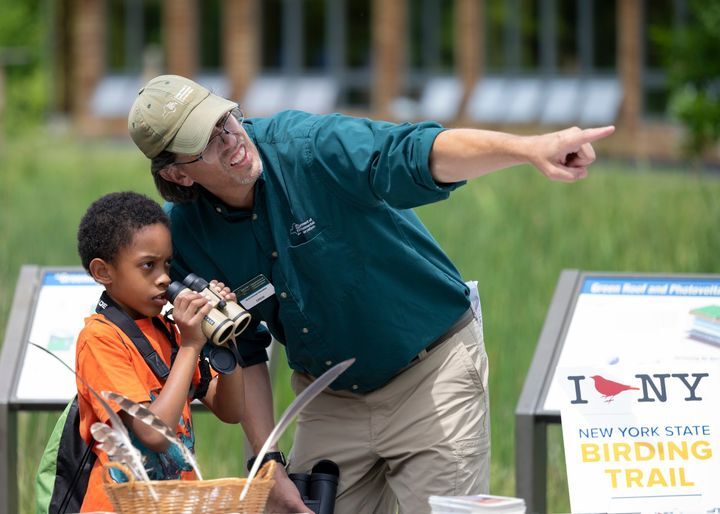 Join DEC,
Join DEC, 
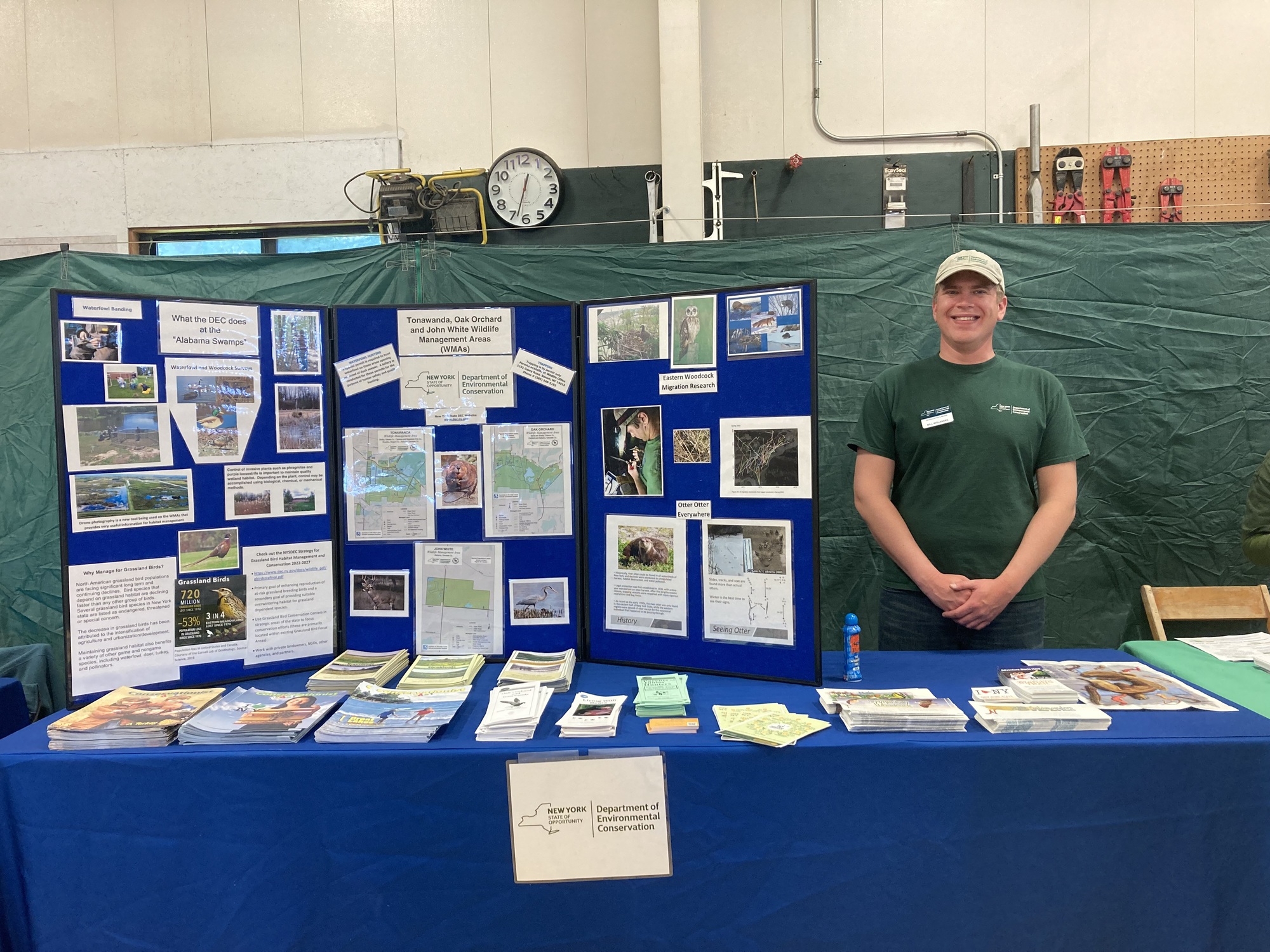
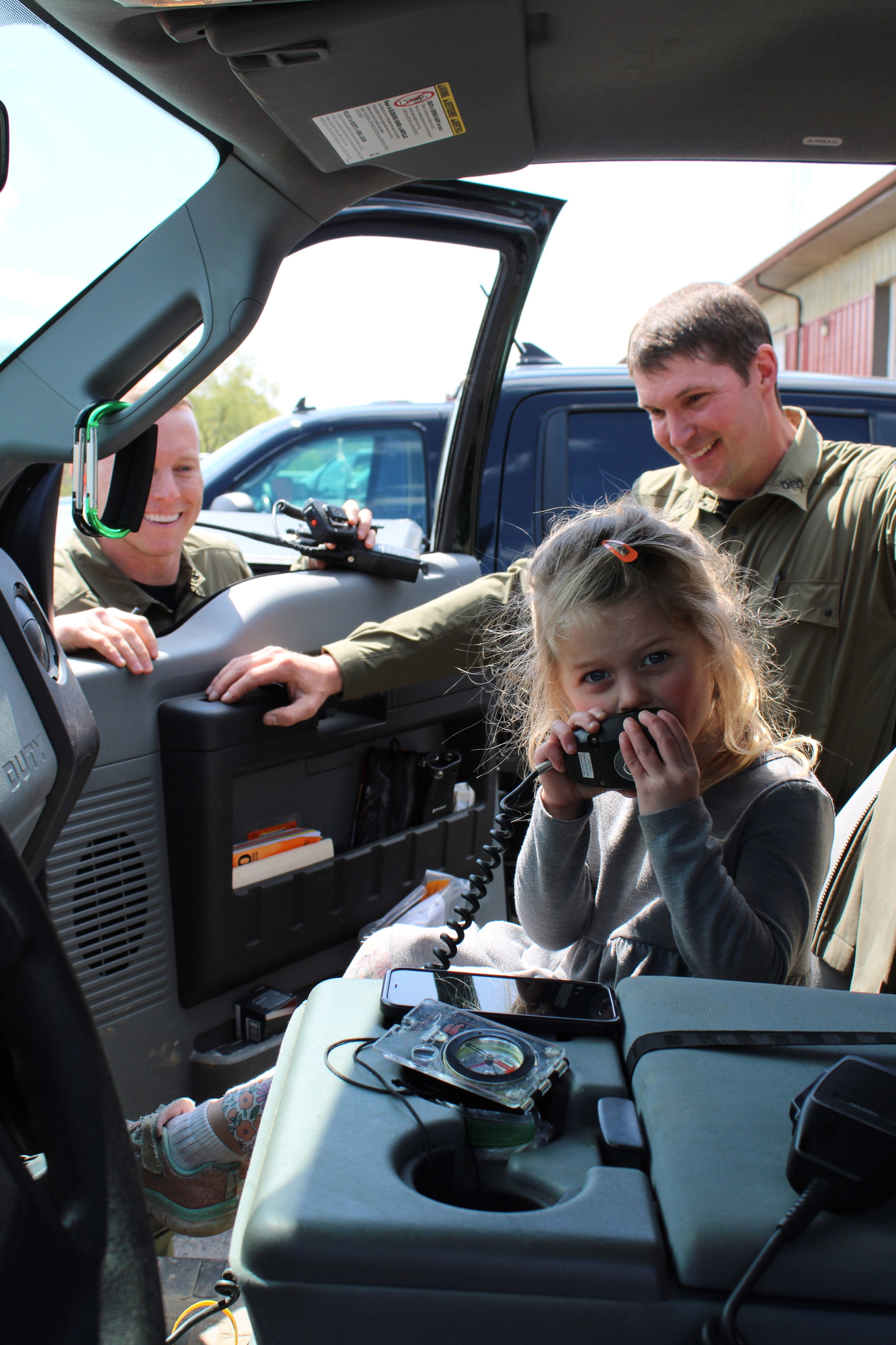









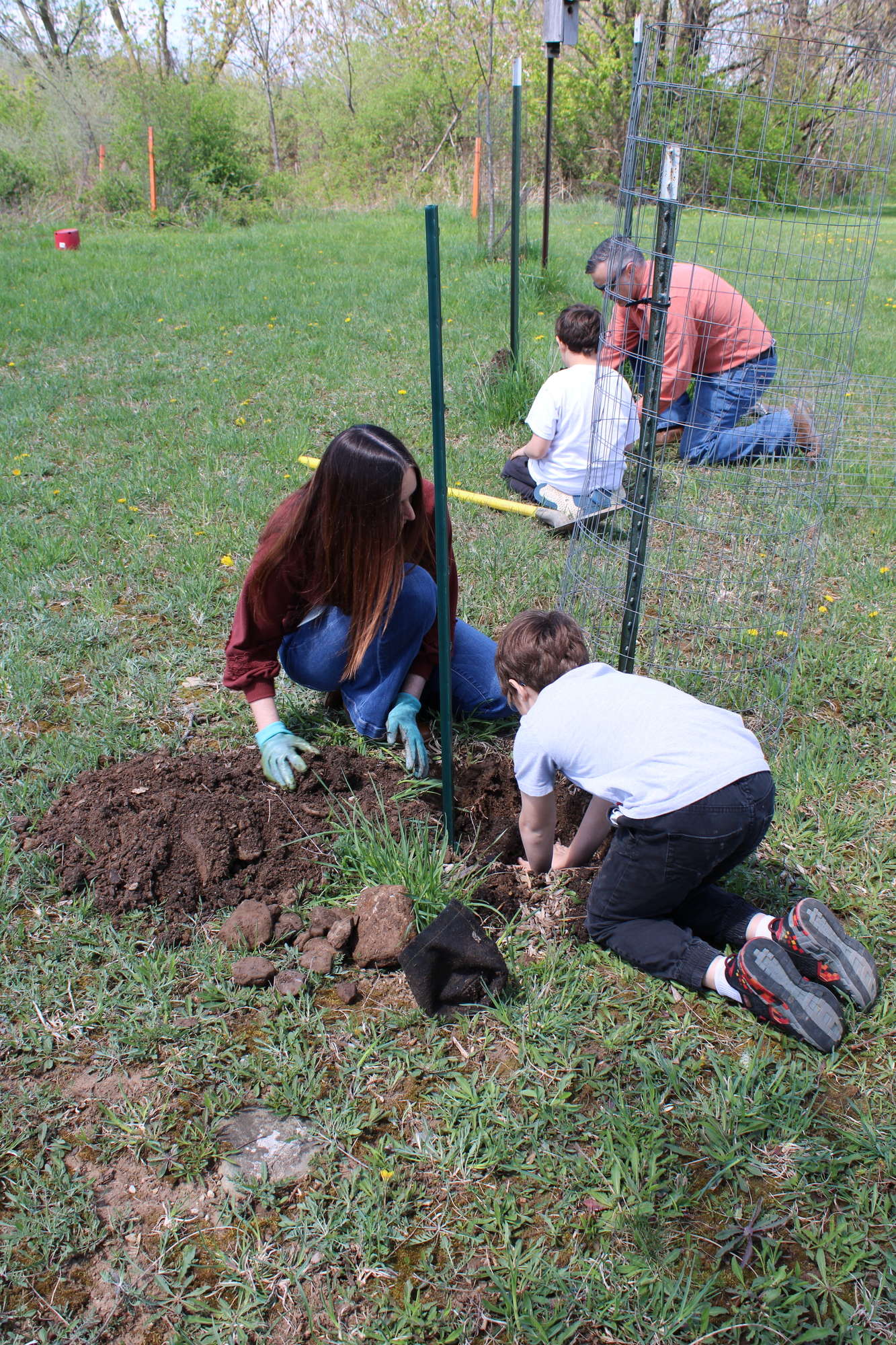

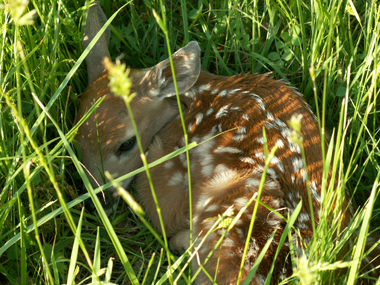
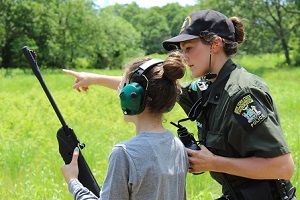 In-person, instructor-led certification courses for hunter education, bowhunter education, and trapper education are now being offered throughout NYS. These free courses are a must for all first-time hunters and trappers planning to go afield this year, but anyone who has an interest in hunting or trapping can take a course as well. Courses fill quickly, so do not delay in registering for a course. Visit DEC's website to
In-person, instructor-led certification courses for hunter education, bowhunter education, and trapper education are now being offered throughout NYS. These free courses are a must for all first-time hunters and trappers planning to go afield this year, but anyone who has an interest in hunting or trapping can take a course as well. Courses fill quickly, so do not delay in registering for a course. Visit DEC's website to 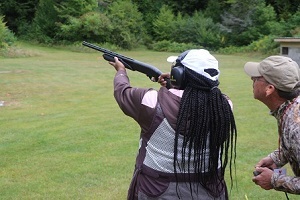 Next Step courses are for those who have completed a hunter education, bowhunter education, or trapper education certification course and want more instruction and hands-on experience in shooting and trapping. These 4-hour courses are taught by certified DEC instructors. There is no certification offered with these courses. Please NOTE: You must be certified in the discipline of the Next Step Course you wish to attend. Certificate number is required for registration.
Next Step courses are for those who have completed a hunter education, bowhunter education, or trapper education certification course and want more instruction and hands-on experience in shooting and trapping. These 4-hour courses are taught by certified DEC instructors. There is no certification offered with these courses. Please NOTE: You must be certified in the discipline of the Next Step Course you wish to attend. Certificate number is required for registration.  Calling may be winding down in many parts of the state, but hearing the sleigh bell-like sound of hundreds of these wetland-loving frogs is a sure sign that spring has sprung. The
Calling may be winding down in many parts of the state, but hearing the sleigh bell-like sound of hundreds of these wetland-loving frogs is a sure sign that spring has sprung. The 